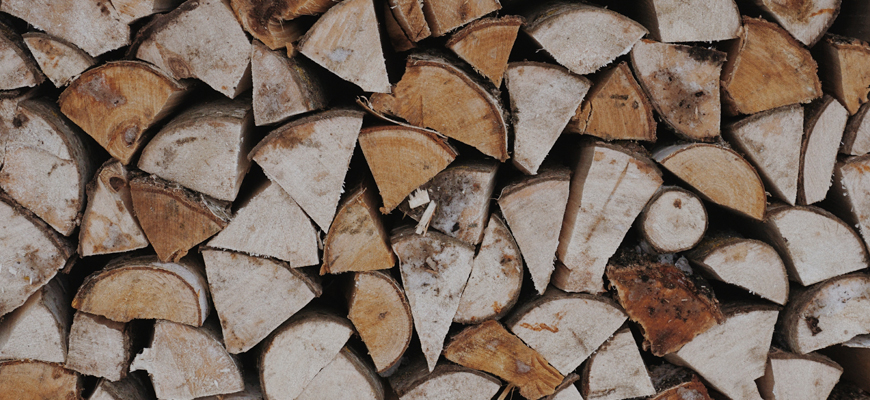
There is a growing interest in using wood as a sustainable, renewable, low carbon alternative. With the depletion of fossil fuels, wood is being accepted as a viable energy source that is not only virtually carbon neutral, but also economically feasible. But which wood is best for burning? Ultimately, there are many suitable firewoods to choose from that will burn well.
Vision Woodburning and Multi-fuel Stoves Video
Hardwoods (deciduous, broadleaved tree species) tend to be denser than softwoods (evergreen, coniferous species). To keep a log stove burning on fewer logs, dense woods tend to be the best as they will burn longer. Softwoods, however, are easier to light and tend to be cheaper to buy.
Here is a list of a variety of different woods, and what they are best for – from slow burning to aroma.*
Oak (hardwood) – Oak is a favoured firewood because of its density, and burns slowly. It is best burnt when it has been seasoned for a long time – usually 2 years or more!
Hawthorn (hardwood) – Hawthorn is most recognised for its sharp thorns. It burns slowly, and produces good heat, but must be handled with care.

Ash (hardwood) – Ash is one of the favourites when it comes to wood fuel. It produces a steady flame and a good heat output. Some may say that it can also be burned ‘green’ because of its relatively low moisture content while living, however, it is essential that you only burn seasoned or kiln dried wood. This is because green woods, when burnt, can produce particulates, tar and creosote that not only stick in your flue, but are also not good for the environment.
Cedar (softwood) – Cedar tends to crackle and spit when it burns and is a popular wood for kindling. It lasts for some time, and has a strong heat output, but take care not to over fire your stove.
Cherry (hardwood) – Cherry burns well and produces a good heat output. It does need to be well seasoned, but when it burns it produces a pleasant aroma.
Apple (hardwood) – Apple burns slowly and smells nice when burning. It tends to produce a smaller flame, so visually not as attractive as some other woods.
Remember to look for seasoned or kiln dried wood with a low moisture content of around 20% or less. You can read more about identifying good firewood on our blog.
*Source: Forestry Commission England, Wood as Fuel Version 1.2
Sign up to our newsletter and receive the latest news and updates, including product launches, offers and promotions, exclusive giveaways and competitions, as well as seasonal tips and advice.
Subscribe Now!
Hi, I have a Stovax multi fuel stove. I am obliged to take down two Chilean Pines in my garden (Monkey Puzzle trees). These have been growing for about 75 -80 years minimum.
The tree surgeon who is going to do the job has said he can cut the wood into usable slices (I’ll need to hire a log splitter). My question is, can this wood be burned in my stove? I do understand that it probably needs to be seasoned for a couple of years.
Pines are evergreen trees and have a high sap content. The sap / resin when burnt can cause deposits in your flue which can increase the risk of chimney fires. If sufficiently dried out (for more than 3 years) it can be burnt but with caution.
I have a blue cedar due to be chopped down. Can I use it once seasoned in my stovax? Studio
Hi Trevor, thanks for your message. Absolutely – you should treat it like any other softwood: season it for about a year and split prior to seasoning (while the wood is still supple and easy to cut), and burn with a mix of hardwoods as well. Burning purely softwood can create greater tar build-up, so mixing hardwood into the burn reduces that effect a little. It does have a high calorific value so will burn hot and fast in comparison to hardwoods, which is another good reason to blend the burn. It will make excellent kindling wood!
Hope this helps.
Many thanks, Chris
Great thanks